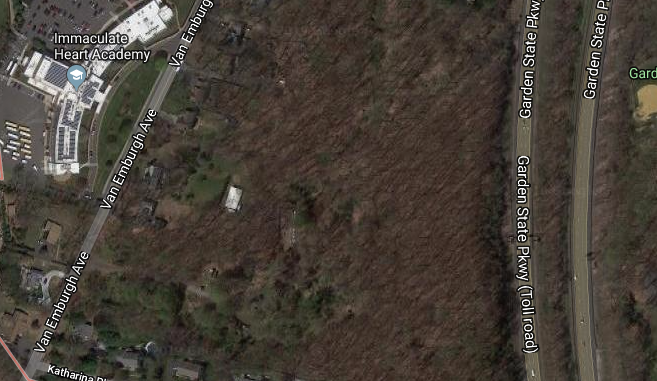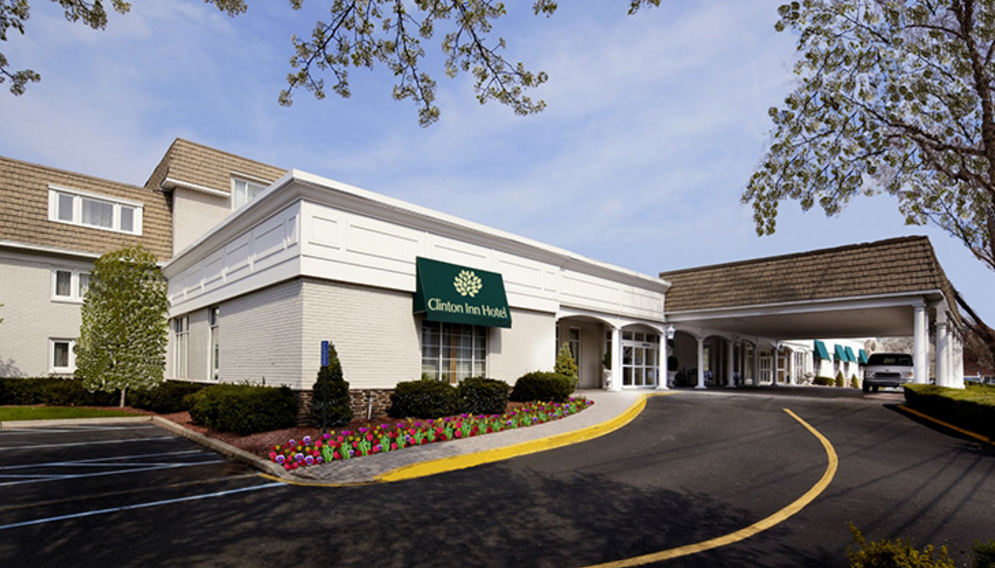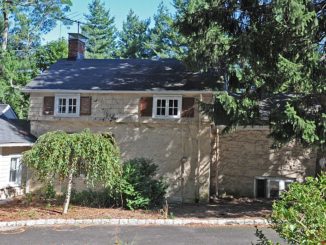
TOWNSHIP OF WASHINGTON, N.J.—The attorney for Concerned Neighbors of Washington Township Inc. says a hypothetical threat of a new builder’s remedy lawsuit in the Viviano subdivision project would be hollow and frivolous.
Nevertheless, Council President Michael DeSena and others on the governing body are backing the Planning Board special attorney’s request for an ordinance that would let the mayor appoint two alternates to that body to coincide with the ongoing Viviano application.
DeSena said he wants to see the application moved along and that the ordinance could help avoid a builder’s remedy lawsuit.
The Viviano project, American Dream Estates, has its roots in a builder’s remedy lawsuit the township settled roughly at the time the United States was invading Afghanistan.
Builder’s remedy, created under the Mount Laurel Doctrine, allows a developer to sue when it believes a community is practicing exclusionary zoning or has not provided its fair share of affordable housing.
It can lead to more units developed than initially proposed.
The role of three members of the nine-member Planning Board—Mayor Peter Calamari, Councilman Art Cumming, and Department of Municipal Facilities Director Dan Scudieri—is uncertain. Calamari and Cumming have been advised to recuse themselves from the Viviano matter.
Calamari has a personal connection to the application in that his father, August, was chairman of the Planning Board in 2004, when Viviano won preliminary approval for the project.
[We incorrectly stated in this space last week that the mayor is a nonvoting member of the Planning Board. The position does in fact get a vote.]
Cumming had faced residents’ attorney John Lamb of Beattie Padovano in litigation and later recused himself as a result.
Scudieri, whose term expires this year, is likely to recuse himself, said a source with inside knowledge of the Planning Board. This has yet to be confirmed. A message left for Scudieri at the DMF was not returned by press time.
In any event, even with three of nine members unavailable, the Planning Board has more than enough for a quorum, and other solutions open to it, Lamb observed Aug. 12.
The alternates ordinance failed on second reading Aug. 12 and was intended to appear anew at a special meeting Aug. 26, but it had been advertised improperly and so was tabled.
Residents spoke against the proposal and the application, wanting to know whether codes were being enforced at the Viviano property, 463 Van Emburgh Ave.; what the owner was doing to maintain a lucrative two-year-old woodland tax exemption; and why the township was granting reprieves to Tomaron Inc./James A. Viviano of Jackson Township that it would not grant any other applicant.
The tract, which had been assessed at approximately $1 million, is now down to $2,000, with Viviano saying it sold $510 in firewood to justify the change.
“Part of this is that the tax status is costing the town valuable tax revenue that would offset projects like the firehouse,” Katharina Place resident Megan Callea said.
Also at the meeting, former town clerk Mary Ann Ozment, 960 Adams Place, worried the Class IV alternates’ addition would lead to the Zoning Board of Adjustment merging with the Planning Board, an outcome DeSena said would not happen while he was around.
Ozment, former secretary to the Planning Board and the ZBA, is a ZBA member, as is Diane Grimaldi, one of the residents represented by Beattie Padovano.
At the same meeting, the council reintroduced a $6 million appropriations ordinance for a combined firehouse and ambulance headquarters.
The measure’s passage failed Aug. 12 with Councilman Robert Bruno absent and Councilman Michael Ullman voting no over the project’s cost and scale.
The governing body next meets Sept. 3, and the Planning Board next meets Sept. 4, at 7:30 p.m. at Town Hall.
‘It will penalize every one of us’
At the Aug. 26 meeting DeSena warned that if the applicant—the late James A. Viviano and heirs—did not get their 73 market rate dwellings, the town could be subject to a builder’s remedy lawsuit.
He corrected his previous remarks and recalled that the request for the alternates came from Allen Bell, the town’s special attorney in the Viviano application.
“They’ve asked us to add these alternate members. I think it’s an important thing that we move the Viviano—or whatever application that needs to move forward—because I want it stated on the record tonight that 75 is better than 150.”
He added, “If the 75 units don’t proceed we’re going to end up with a builder’s remedy lawsuit of 150-plus homes up there, and that will penalize every one of us in the township.”
DeSena, an engineer, added, “That’s just the way I see it and that’s why I brought it up again [on the agenda].”
To critics, including Concerned Neighbors of Washington Township Inc., he said, “You have your comments against it; that’s mine for it.” He then interjected, “I want it done right.”
Bruno said, “This is not a council issue, it’s a Planning Board issue. They have enough people on the Planning Board.”
Ullman agreed, saying he’d been advised against addressing the Planning Board on the application so as to avoid an appearance of conflict in arguably influencing the proceedings.
“The fact that this is being requested for a specific application—and it’s coming before the council for a specific action—I equate to us influencing that application. And I don’t feel we should be,” he said.
After the meeting DeSena clarified to Pascack Press that he had not been given any indication from the developer that a builder’s remedy lawsuit was threatened. He said he arrived at a hypothetical figure of 150 units by intuition.
A statewide issue
The requirement that all communities in the Garden State are obligated to provide their “fair share” of affordable housing dates to 1975, when the state Supreme Court issued its first decision in a case involving Mount Laurel.
Even many who agree with it philosophically have protested unintended consequences, which in the most densely populated state in the nation have involved overcrowding, worsening traffic, and a burden on other infrastructure.
Some, perhaps most forcefully resident and ZBA alternate Toni Plantamura, have spoken out at public meetings to deride the law as a developer “boondoggle.”
She also criticized the town’s plan to take on the Pascack/Washington intersection fix near the firehouse ahead of Bergen County and the New Jersey Turnpike Authority taming traffic flow from the Garden State Parkway.
Residents want current standards met
In a statement Aug. 22, the neighbors group told Pascack Press in part, “We would love a development to materialize.”
They said “The project should undergo reasonable changes because the old variances the developer obtained have long since expired” and the plans are not entirely up to current standards.
Residents Diane Grimaldi and Callea, who are part of the group represented by Lamb, of Beattie Padovano, pressed the officials on a related wetlands remediation permit affecting a township parcel the Vivianos need for the project. The original expired in early July.
Grimaldi also complained the cleanup of debris on the Viviano property “has stalled” since 2016, “with just a portion of the rusty vehicles and other abandoned garbage left to continue to break down into the soil, causing further probable contamination.”
She asked, “Why has the administration in this town allowed the Vivianos to maintain a dump for all these years without it being addressed, even after neighborhood complaints?”
Grimaldi noted the applicant applied for and was approved woodland tax exempt status two years ago, a commitment requiring it to be a good steward of the property under strict minimum state guidelines.
They’re supposed to be selling firewood from the site as part of the status. It’s not clear where that business stands.
DeSena said Township Administrator Robert Tovo was meant to submit reports on code enforcement and related matters at the site. Tovo was absent from the special meeting.
‘Tract has already generated its affordable housing’
Lamb wrote following the meeting that if the township believed a legitimate builder’s remedy suit was likely then it was misinformed.
He gave extensive background, dating to Viviano’s 2000 builder’s remedy suit against the township, which was settled in 2001.
The settlement provided that Viviano would be permitted to construct 48 single-family detached dwellings on lots with a minimum lot area of 6,000 square feet and 25 townhouse dwelling units, for a total of 73 dwelling units.
The settlement bound Viviano to make a payment in lieu of construction of $375,000 to the township for affordable housing purposes—$25,000 per unit for 15 equivalent affordable units, a 20% set-aside for the site.
The 2001 Housing Element and Fair Share Plan indicated that the tract would be rezoned in accordance with the terms of the settlement agreement. It was included in the Township’s Realistic Development Potential.
With that rezoning accomplished, Lamb wrote, “Viviano then applied for a project that contained more than 30 variances (now expired) and did little to respect the adjacent homes.”
He added that “In reliance on the promise to pay $375,000 as part of the settlement agreement—18 years ago—the township entered into a Regional Contribution Agreement (RCA) with Bayonne and transferred $275,000 to Bayonne for the construction of 11 units of affordable housing.”
The township filed a declaratory judgment action on June 29, 2015 and entered into a settlement agreement with Fair Share Housing Center. A judge ruled the settlement fair on June 1, 2017.
The Planning Board adopted its Housing Element and Fair Share Plan that July 26, and this council endorsed the Fair Share Plan that Aug. 7.
“The 2017 Housing Element and Fair Share Plan identifies that the 11-unit RCA to Bayonne that was to be funded by Viviano (though the developer still has not paid any money) has been used to satisfy the Township’s prior round obligation,” Lamb wrote.
The Viviano property is then identified as an affordable housing site as part of the township’s realistic development potential.
Lamb explained, “The Viviano tract already generated its affordable housing … when the Township sent 11 affordable units to Bayonne by way of an RCA.”
He said “There is no case that holds that a site already included in a fair share plan can obtain more units simply at the request of the developer.”
He added that his clients believe “the [hypothetical] threat of a builder’s remedy suit and the possibility of vastly more units on the Viviano tract is a hollow one.”
Ultimately, he said, “The Township should not be bullied by a developer who still owes it the hundreds of thousands of dollars it promised more than 15 years ago.”
Pascack Press reached out to a member of the Viviano family for input on this story but did not hear back by press time.



